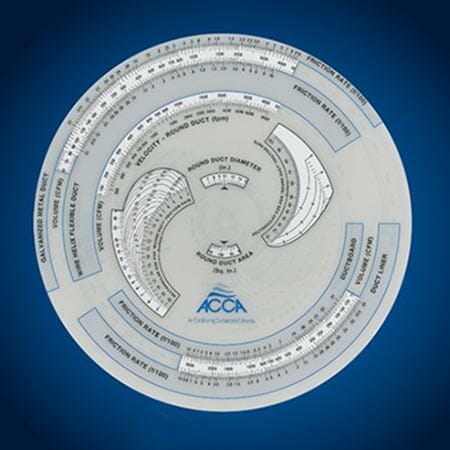HVAC duct calculators play an essential role in determining the proper size of ductwork for heating, ventilation, and air conditioning systems. Properly sized ducts are critical to maintaining optimum airflow, improving energy efficiency, and ensuring the comfort of occupants in both residential and commercial spaces.
The Importance of Proper Duct Sizing
Accurate duct sizing is crucial for several reasons:
Energy efficiency: Properly sized ducts reduce energy consumption by ensuring efficient airflow and eliminating the need for the system to work harder.
Comfort: Correctly sized ducts maintain consistent temperatures throughout the space, preventing hot and cold spots.
Air quality: Adequate duct sizing helps to reduce the accumulation of dust, allergens, and other pollutants, promoting a healthier indoor environment.
System longevity: Proper duct sizing helps to reduce wear and tear on the HVAC system, prolonging its life and reducing maintenance costs.
Steps to Accurately Calculate HVAC Duct Sizes
Follow these steps to calculate HVAC duct sizes accurately:
Gather necessary information: Start by collecting all relevant data about the building, including:
- Building layout and dimensions
- Insulation levels and materials
- Window sizes, types, and locations
- Door sizes and materials
- Occupancy patterns and schedules
- Heat-generating appliances and equipment
Calculate heating and cooling loads: Use Manual J or an equivalent method to determine the heating and cooling loads for each room or zone. This process involves:
- Calculating the heat loss and gain through building components, such as walls, roofs, windows, and doors
- Accounting for internal heat gains from occupants, lighting, and appliances
- Incorporating local climate data and outdoor design temperatures
- Adjusting for factors such as ventilation and infiltration rates
Determine required airflow: Once the heating and cooling loads are established, calculate the required airflow (measured in cubic feet per minute, or CFM) for each room or zone. This can be done using the following steps:
- Divide the heating load (in BTUs per hour) by the temperature rise (in °F) to determine the required heating airflow
- Divide the cooling load (in BTUs per hour) by the temperature drop (in °F) to determine the required cooling airflow
- Choose the larger of the two airflow values as the required airflow for each room or zone
Select duct sizing method: Choose an appropriate duct sizing method based on the specific requirements and constraints of the project. Common methods include:
- Equal friction method
- Static regain method
- Constant velocity method
Consider factors such as the size and complexity of the HVAC system, the desired level of airflow distribution, and the noise requirements when selecting a sizing method.
Size ducts: Use a duct calculator, software, or app to determine the appropriate duct sizes based on the required airflow and the selected sizing method. Be sure to account for factors such as:
- Duct material and roughness
- Air temperature and density
- Duct length and fittings
- Desired system pressure and velocity
Manual and Automated HVAC Duct Calculators
There are two main types of HVAC duct calculators:
Manual duct calculators: These are physical tools, often in the form of a sliding chart or wheel, that allow you to input the required CFM and other parameters to calculate duct sizes. Manual calculators are portable and do not require a power source or internet connection.

Automated duct calculators: These are software programs or apps that perform the calculations electronically. Automated calculators often offer additional features, such as integrated load calculations and the ability to store and manage project data.
HVAC Duct Sizing Software and Apps
Several software programs and apps are available to help you calculate duct sizes more efficiently as well as pipe volume calculators. Some popular options include:
ACCA Manual D: developed by the Air Conditioning Contractors of America, offers comprehensive duct sizing calculations based on the industry-standard Manual D method.
DuctSizer: A mobile app for Android and iOS devices that simplifies duct sizing calculations and offers multiple methods, such as equal friction, constant velocity, and static regain.
Elite Ductsize: A powerful software program that integrates with other Elite Software applications for load calculations, system design, and energy analysis, providing a seamless workflow for HVAC professionals.
HVAC Duct Sizer: A user-friendly mobile app for Android and iOS devices that allows for quick and easy duct sizing based on CFM, friction loss, and other parameters.
Just Starting?
Try our Free HVAC Estimate Template
Common Duct Sizing Methods
There are several widely-used methods for sizing HVAC ducts:
Equal friction method: This method maintains a constant friction rate throughout the duct system, ensuring that the pressure drop per unit length is the same for all ducts. It is relatively simple to apply and works well for most residential and light commercial applications.
Static regain method: This method balances the pressure loss in each duct section with the pressure regain that occurs as the air slows down. It is more complex than the equal friction method but provides better airflow distribution and is often used for larger commercial and industrial systems.
Constant velocity method: This method maintains a constant air velocity throughout the duct system, which helps to minimize noise and maintain consistent airflow. It is typically used in specialized applications, such as exhaust systems and laboratories.
Tips and Best Practices for HVAC Duct Sizing
In this section, we will share some helpful tips and best practices to ensure accurate and efficient HVAC duct sizing:
Seal ducts properly: Proper sealing of duct joints and seams is crucial to prevent air leakage, which can lead to reduced system efficiency and comfort issues. Use high-quality sealing materials, such as mastic or UL-181 approved tape.

Insulate ducts: Insulating ducts helps to maintain desired air temperatures and minimize heat loss or gain. Be sure to select the appropriate insulation material and thickness based on local climate and building requirements.
Consider duct layout and configuration: Optimal duct layout can significantly improve airflow and system performance. Minimize the number of turns, bends, and fittings to reduce pressure losses and simplify installation.
Account for air balancing: Ensure that supply and return airflows are balanced to maintain consistent pressure within the space. Proper air balancing can help prevent drafts, noise, and other comfort issues.
Choose the right duct material: Selecting the appropriate duct material is crucial for durability and performance. Common materials include galvanized steel, aluminum, and flexible ducting. Consider factors such as cost, ease of installation, and resistance to corrosion when making your choice.
Regularly maintain your HVAC system: Regular maintenance, such as cleaning filters, coils, and ducts, can help prolong the life of your HVAC system and improve its efficiency. Schedule routine check-ups and inspections to identify and address potential issues before they become costly problems.
By following these tips and best practices, you can optimize your HVAC duct sizing process and ensure a more efficient and comfortable environment for occupants. Visit our article on HVAC Load Calculations to increase your expertise even further.


